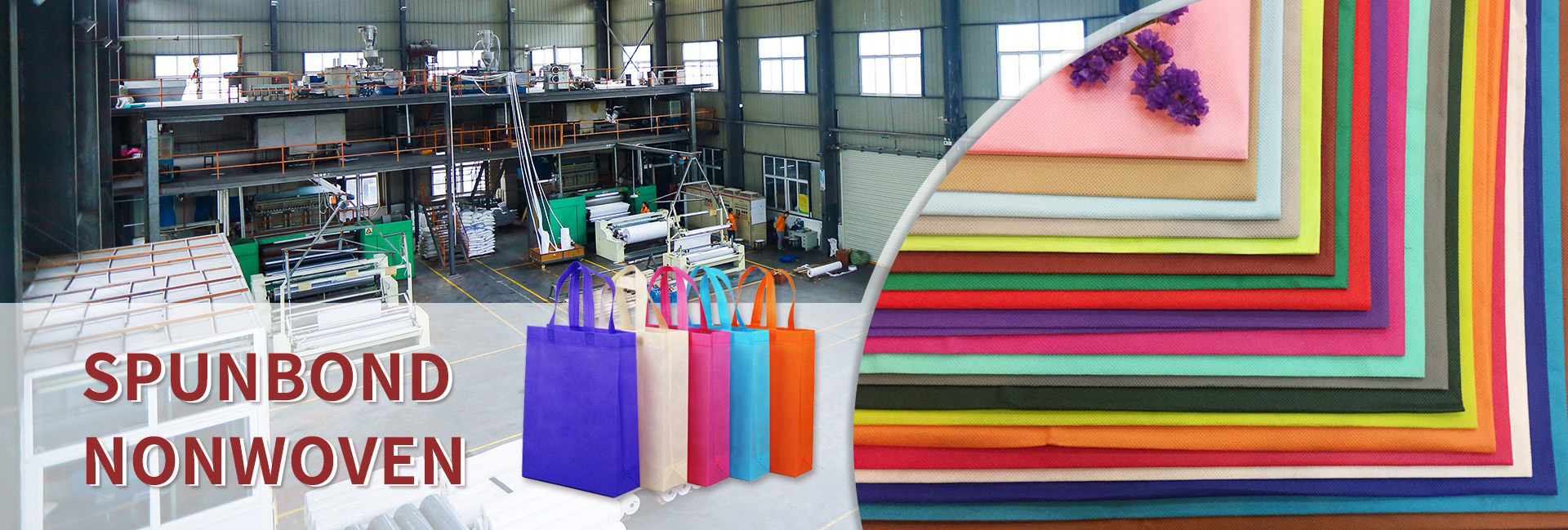The production process of hot air non-woven fabric is a complex process that combines material science and mechanical engineering, with the core being the use of hot air bonding technology to form a stable structure of the fiber web. The following is a detailed expanded explanation of each production process:
Raw material selection and pretreatment
Main raw materials
Polypropylene (PP), with low cost and melting point (about 160-170 ℃), is widely used as a sanitary material; Polyester (PET), high temperature resistance, high strength, suitable for durable products; ES fiber (skin core structure), with a conventional polypropylene/polyester outer layer and a low melting point polyethylene (PE) core layer. After heating, the outer layer maintains its structure while the core layer is melted and bonded.
Environmentally friendly materials such as polylactic acid (PLA) and biodegradable polyester (PBAT) are used for green products.
Functional fibers: Adding bamboo charcoal, chitin, etc. endows them with antibacterial and deodorizing properties.
Fiber parameters: The length is usually 38-51mm, the fineness is 1.5-3D, and the ratio needs to be adjusted according to the product weight (such as 15-100g/m ²).
Fiber loosening and mixing
By using mechanical strikes such as piercing rollers, serrated rollers, or airflow impact, the fiber clusters are decomposed into single fiber states, reducing clumping.The horizontal double helix mixer ensures uniformity, and the mixing time is usually 10-30 minutes. Additives (such as flame retardants that need to be evenly dispersed) can be added.
pretreatment
Humidity control (RH 50-60%) to reduce static electricity and improve fiber dispersion.
Web formation and fiber laying
Network formation method
Sort it into a network:
The carding machine, the main cylinder, the working roll and the stripping roll are matched, and the fibers are combed into a parallel thin net, which is suitable for producing uniform thin materials (such as facial mask base cloth). Multi layer fiber mesh stacking improves the longitudinal and transverse strength ratio (MD/CD close to 1:1).
Airflow networking:
Using negative pressure airflow to randomly distribute fibers is suitable for high fluffiness products (such as filter materials), with slightly lower uniformity but high fluffiness of the fiber web. The fiber mesh weight is usually controlled between 20-200g/m ², with the optimal range being 20-80g/m ².
Hot air reinforcement
Hot blast stove and penetration technology
According to the fiber melting point setting, PP fibers typically have a temperature range of 130-160 ℃, while ES fibers have a temperature range of 110-140 ℃. Avoid fiber degradation caused by excessive temperature. Hot air penetrates the fiber mesh from the top or bottom, with a wind speed of 0.5-2m/s, ensuring even distribution of heat. Multi porous plate design optimizes airflow path. Low melting point fibers soften and crosslink with surrounding fibers, forming a “point bonding” structure that balances softness and strength.
Device Type
Flat mesh oven: suitable for low-speed production, the fiber mesh is heated at rest; Round mesh dryer: The fiber mesh is attached to the surface of the drum, continuous and efficient, suitable for large-scale production.
Cooling and shaping
Cooling method
The cold air roller or water-cooled roller rapidly cools down (to below 50 ℃) to prevent deformation caused by residual heat.
Mechanical shaping
Polishing machine: The hot-rolled roller (non bonded) is slightly pressurized to improve surface smoothness.
Thickness adjustment: Control the product thickness (e.g. 0.2-2mm) by adjusting the roller spacing.
Post processing technology
Functional processing
Immersion method: The fiber mesh is immersed in an anti-static agent (such as quaternary ammonium salt) solution, with a rolling rate of 80-120%, and dried to form a coating.
Spray method: Water repellent agent (fluorocarbon) is uniformly sprayed in the form of atomization to reduce raw material consumption.
Composite process: laminated with meltblown fabric, film, etc., used to enhance the barrier properties of medical protective clothing.
Special effects
Embossing roller etches patterns to increase aesthetics or flow guiding function.
Rolling and Quality Control
Down coiler
Adopting a constant tension control system to avoid tensile deformation. Cutting accuracy within ± 0.5mm.
Quality Inspection
Physical properties: tensile strength (such as MD ≥ 20N/5cm), breathability (200-1000L/m ²/s).
Safety standards: ISO 9073 series testing, or medical grade ISO 13485 certification.
package
Vacuum packaging with moisture-proof film, indicating weight, width, batch number and other information.
Through the above refined process control, the hot air non-woven fabric achieves a balance between softness, breathability, and strength, meeting the high standard requirements of various fields such as medical, sanitary, and filtration. In the future, with the advancement of biodegradable materials and intelligent manufacturing, this process will continue to be upgraded, promoting the sustainable development of the industry.
Dongguan Liansheng Non woven Technology Co., Ltd. was established in May 2020. It is a large-scale non-woven fabric production enterprise integrating research and development, production, and sales. It can produce various colors of PP spunbond non-woven fabrics with a width of less than 3.2 meters from 9 grams to 300 grams.
Post time: May-15-2025

